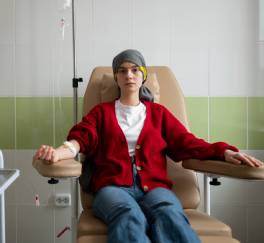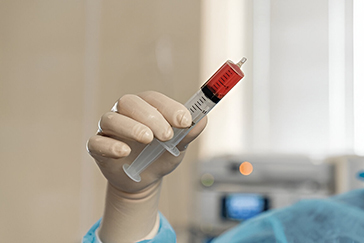 Book Appt.
Book Appt.
 Call Now
Call Now


Graft-versus-host disease (GVHD) is a complex and potentially life-threatening complication that can occur after a hematopoietic stem cell or bone marrow transplant. It arises when donor cells recognize the recipient's tissues as foreign and mount an immune response against them. GVHD can affect various organs and systems in the body, and its severity can vary.
To understand GVHD, it's essential to understand the fundamentals of stem cell and bone marrow transplantation. These procedures are often performed to treat conditions such as leukemia, lymphoma, or certain genetic disorders. The goal is to replace the recipient's malfunctioning or cancerous cells with healthy donor cells to restore normal blood cell production. However, the donor's immune cells, including T cells, can recognize the recipient's tissues as foreign, leading to GVHD.
Causes and Risk Factors
GVHD primarily occurs after allogeneic transplants, where the donor and recipient are not genetically identical (such as a sibling or unrelated donor). The risk factors and causes of GVHD include:
Symptoms of GVHD
GVHD can manifest in two forms: acute and chronic, each with its unique set of symptoms.
Diagnosis of GVHD
Diagnosing GVHD requires a combination of clinical evaluation and diagnostic tests, including:
Treatment Options
Treatment for GVHD is complex and aims to suppress the donor immune response while preserving the graft's anti-cancer effect. Common approaches include:
Immunosuppressive Medications:
Biological Therapies:
Photopheresis:
Prognosis and Outlook
The prognosis for GVHD varies depending on the severity of the disease and the effectiveness of treatment. Acute GVHD can often be controlled with immunosuppressive therapy, while chronic GVHD may require ongoing management. With advancements in transplantation techniques and GVHD treatment, more patients are achieving successful outcomes after these procedures.
Graft-versus-host disease is a complex and challenging complication of stem cell and bone marrow transplantation. Understanding the causes, risk factors, symptoms, diagnosis, and treatment options for GVHD is essential for both healthcare providers and patients. While GVHD presents significant challenges, ongoing research and medical advancements offer hope for improved outcomes and a better quality of life for individuals who undergo transplantation.
SHALBY Sanar International Hospitals provides extensive medical procedures backed up with our state-of-the-art technology and a team of highly qualified & experienced clinical experts.
Our doctors pen down their research findings and experiences from time to time. Their words provide deep insight into the latest techniques, technologies and other advancements in healthcare. It provides expert answers to all kinds of health questions for real-life issues.
VIEW ALL



.jpg)
Since the day of its foundation, SHALBY Sanar International Hospitals is committed to provide comprehensive healthcare services. It regularly organizes awareness programs in its premises and encourages outdoor healthcare activities and camps with an intent to put focus on preventive healthcare.
VIEW ALL